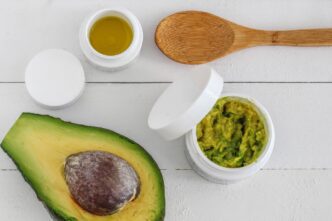A Quick Takeaway
The Story Behind the Trend
How to Make It Work for You
The Community View
To unlock significant muscle growth and truly maximize your strength potential, individuals must prioritize lifting intensity, which refers to how close you train to muscular failure with a given load. This crucial principle applies to anyone engaged in resistance training, from beginners to advanced lifters, and is fundamental for stimulating the physiological adaptations necessary for hypertrophy, regardless of whether you train at home or in a fully equipped gym. By consistently challenging your muscles to their limits, you signal to your body the need to adapt and grow stronger, making intensity a non-negotiable factor in any effective muscle-building program.
What is Lifting Intensity?
Lifting intensity, in the context of muscle growth, is not solely about the amount of weight you lift, but rather the relative effort you exert during each set. It’s often quantified by how many repetitions you have “in reserve” (RIR) before reaching momentary muscular failure. A higher intensity means fewer reps left in the tank, pushing your muscles closer to their absolute limit.
This concept is also related to the Rate of Perceived Exertion (RPE), where a higher number signifies a greater effort. For optimal muscle growth, the goal is often to train within a specific RIR or RPE range to ensure sufficient stimulus.
Why Intensity Matters for Muscle Growth
Muscle growth, or hypertrophy, is primarily driven by three mechanisms: mechanical tension, muscle damage, and metabolic stress. Maximizing lifting intensity directly impacts all three, making it a cornerstone of effective training.
High mechanical tension, achieved by lifting heavy enough loads close to failure, sends a powerful signal to muscle cells to adapt and grow. The micro-trauma, or muscle damage, induced by intense training initiates repair processes that lead to larger, stronger muscle fibers. Furthermore, the accumulation of metabolites during high-intensity sets creates metabolic stress, which also contributes to the hypertrophic response.
How to Maximize Your Lifting Intensity
Implementing strategies to consistently push your muscles to their limits is key for unlocking continuous gains. This involves a combination of understanding your body’s capabilities and intelligently structuring your workouts.
Understanding Reps in Reserve (RIR)
For hypertrophy, aiming for 0-3 RIR on most working sets is highly effective. 0 RIR means you couldn’t complete another rep with good form, while 3 RIR means you could have completed three more. Consistently training in this range ensures you are providing an adequate stimulus for muscle growth without always training to absolute failure, which can be overly fatiguing.
Start by honestly assessing how many more reps you could perform at the end of a set. Over time, you’ll become more adept at gauging your RIR and pushing yourself appropriately.
The Role of Progressive Overload
Progressive overload is the gradual increase in stress placed on the body during training. While often associated with increasing weight, it can also involve increasing reps, sets, reducing rest times, or improving technique to make an exercise more challenging. Without consistently striving to do more over time, your muscles will have no reason to adapt and grow.
Track your workouts diligently to ensure you are continually progressing, whether by adding weight, performing more reps with the same weight, or completing the same work in less time. This systematic challenge is fundamental to long-term muscle development.
Training to Failure (and When to Use It)
Training to momentary muscular failure, where you cannot complete another repetition with good form, can be a potent stimulus for muscle growth. However, it can also be highly fatiguing to the central nervous system and may increase recovery demands.
It’s often best to incorporate training to failure strategically, perhaps on the last set of an exercise or for specific exercises, rather than on every set of every workout. This approach allows you to reap the benefits of maximal intensity while managing fatigue and preventing overtraining.
Exercise Selection and Form
Choosing exercises that allow for a high degree of mechanical tension and a full range of motion is crucial. Compound movements like squats, deadlifts, and presses are excellent for this, as they engage multiple muscle groups and allow for heavier loads. Isolation exercises can then be used to target specific muscles with precision.
Maintaining proper form, even as intensity increases, is paramount to prevent injury and ensure the target muscles are effectively stimulated. Sacrificing form for heavier weight or more reps ultimately detracts from intensity by shifting stress away from the intended muscle.
Mind-Muscle Connection
Actively focusing on contracting the target muscle throughout the movement can significantly enhance intensity. This “mind-muscle connection” helps ensure that the muscle you intend to work is actually doing the work, rather than relying on momentum or synergistic muscles.
By consciously feeling the muscle stretch and contract, you can achieve a deeper, more effective stimulus even with lighter loads, making every rep count towards growth.
Periodization and Deloads
To sustain high-intensity training, incorporating periodization and deload weeks into your program is essential. Periodization involves varying training variables over time to prevent plateaus and manage fatigue. Deload weeks, characterized by reduced volume or intensity, allow your body to fully recover and resensitize to training stimuli.
These periods of planned recovery are not a sign of weakness but a smart strategy to ensure long-term progress and the ability to consistently train with high intensity.
Signs You’re Not Maximizing Intensity
If you’re consistently leaving several reps in reserve, not feeling challenged by your workouts, or experiencing a lack of progress despite consistent training, your lifting intensity may be suboptimal. While muscle soreness isn’t a perfect indicator, a complete absence of it might also signal insufficient effort. Pay attention to your body’s feedback and be honest about your effort levels to make necessary adjustments.
Key Takeaways for Optimal Muscle Growth
Maximizing lifting intensity is a cornerstone of effective muscle growth, requiring a commitment to pushing your limits consistently. Focus on training with 0-3 Reps in Reserve (RIR) for most sets, diligently apply progressive overload, and strategically incorporate training to failure. Prioritize proper exercise selection and form, cultivate a strong mind-muscle connection, and include periodization and deloads to sustain your progress. By integrating these principles, you will create an environment optimized for continuous muscle development and strength gains.








